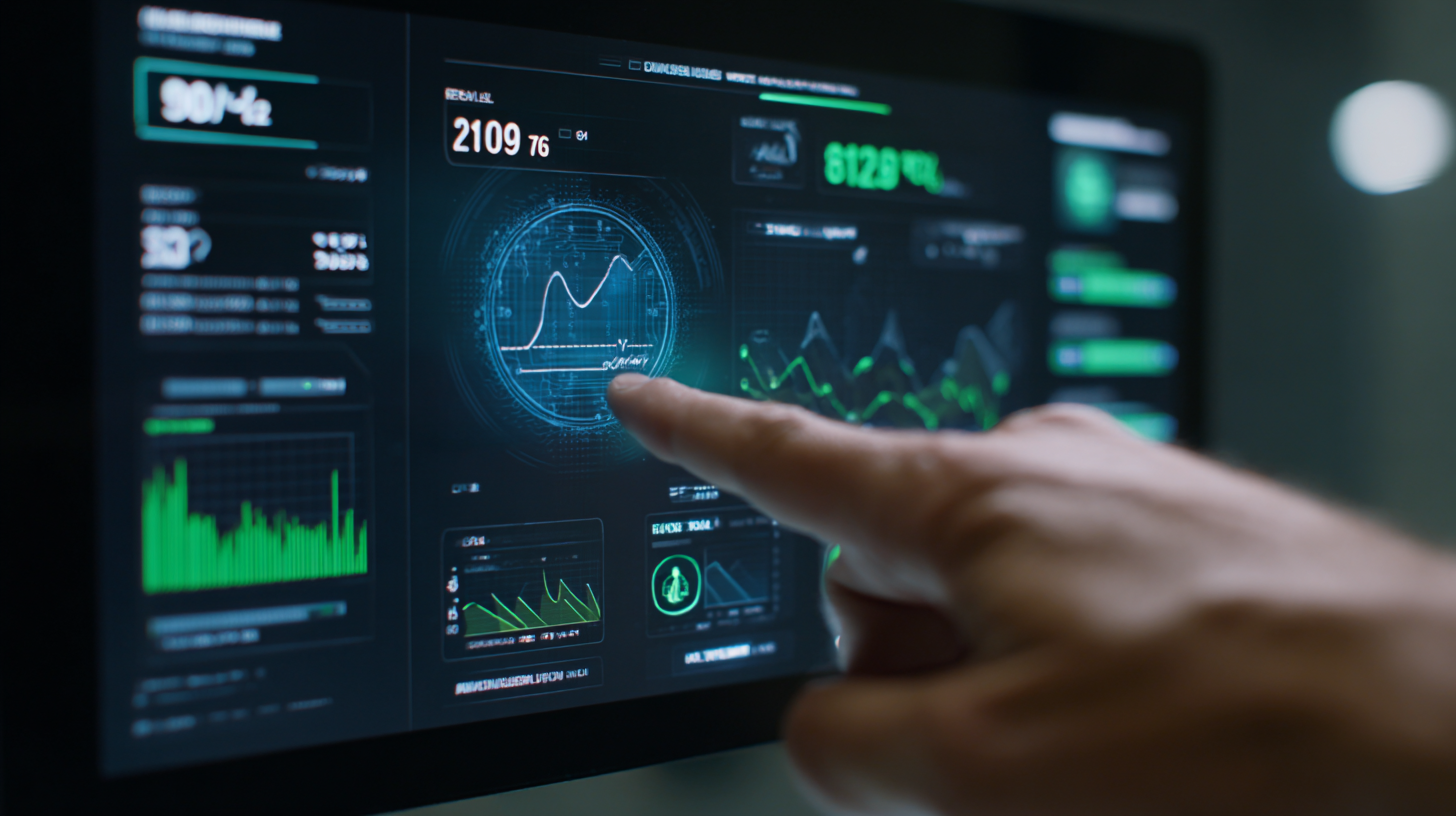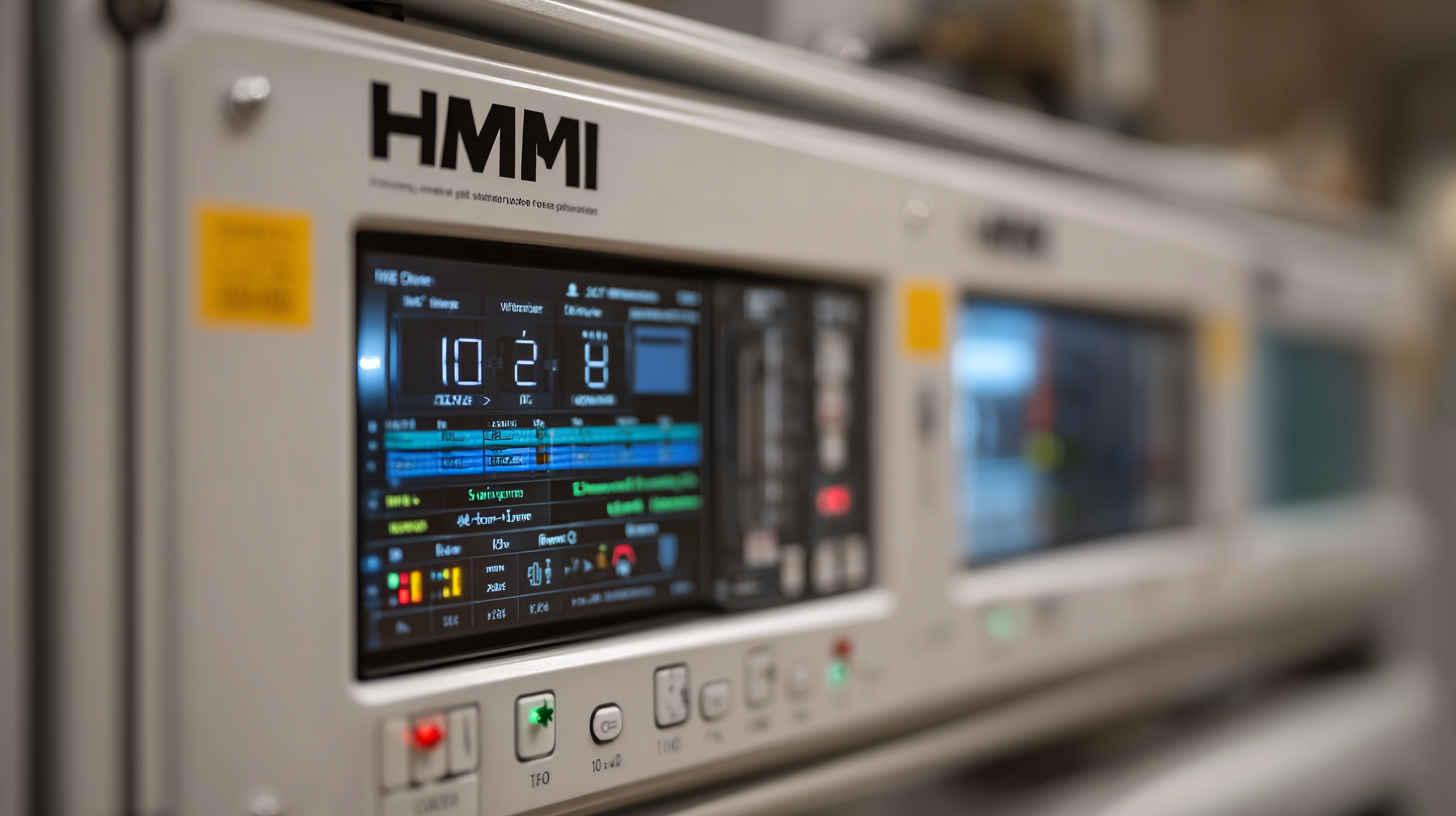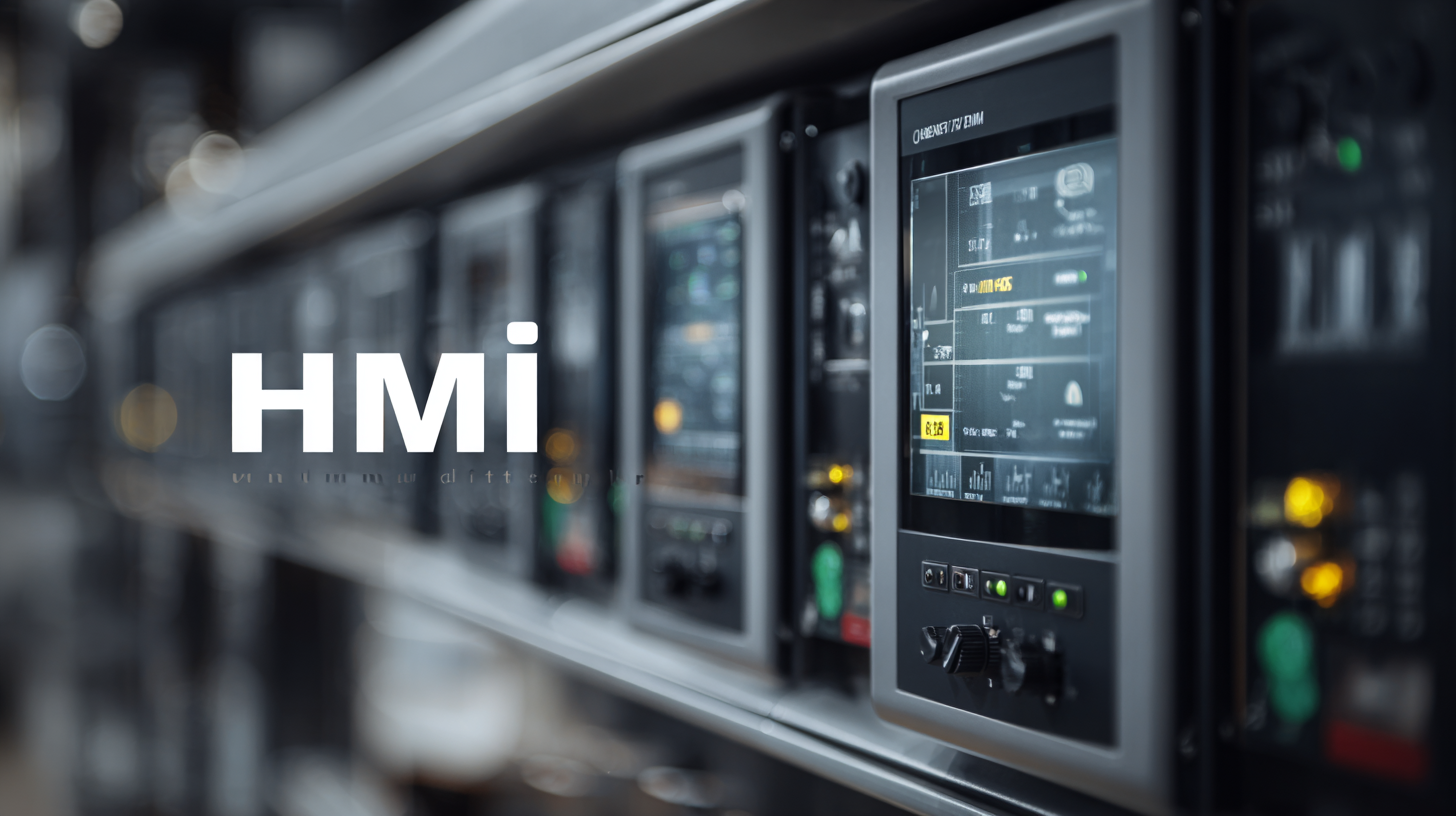
Unlocking Efficiency: A Deep Dive into the Specs of the Best HMI Touch Screen and How to Choose the Right One for Your Business
As industries continue to evolve in the wake of digital transformation, the significance of advanced Human-Machine Interfaces (HMIs) has never been more pronounced. A recent report by MarketsandMarkets predicts that the global HMI market is set to reach $7.52 billion by 2025, driven largely by the increasing adoption of automation and IoT technologies across various sectors. Among the diverse HMI options available, touch screens stand out for their intuitive interfaces and ease of use, making them a pivotal component in enhancing operational efficiency.

In this blog, we will dive deep into the specifications of the best HMI touch screens, exploring key features that can significantly impact performance and user experience. Furthermore, we will provide top strategies for selecting the most suitable HMI touch screen tailored to your business needs, ensuring you remain competitive in an increasingly tech-driven landscape.
Exploring the Key Features of High-Quality HMI Touch Screens in China
When selecting a high-quality HMI touch screen for your business in China, several key features should be prioritized to ensure optimal performance and user experience. First, consider the display resolution and size. A higher resolution not only provides clearer visuals but also enhances user interaction, making it easier to navigate various functions. Additionally, a larger screen offers more space for displaying complex data or multiple control elements, reducing the likelihood of errors during operation.
Another critical aspect is the durability of the touch interface. HMI touch screens should be constructed to endure harsh environments, including dust, moisture, and temperature fluctuations. Look for screens with IP-rated enclosures that meet the necessary industry standards. Furthermore, responsive touchscreen technology is vital. Capacitive or resistive touchscreens each have their advantages, but capacitive screens typically offer greater sensitivity and responsiveness, making them preferable for applications requiring precise control. By focusing on these essential features, businesses can choose the right HMI touch screen that meets their operational needs and enhances productivity.
Unlocking Efficiency: A Deep Dive into the Specs of the Best HMI Touch Screen and How to Choose the Right One for Your Business
| Feature | Description | Importance | Typical Range |
|---|---|---|---|
| Screen Size | Physical size of the display, typically measured diagonally. | Affects usability and visibility in various environments. | 7" to 24" |
| Resolution | Number of pixels in each dimension that the screen can display. | Higher resolution improves clarity and detail. | 800x480 to 1920x1080 |
| Touch Technology | Type of touch sensing used (resistive, capacitive). | Influences responsiveness and user experience. | Capacitive, Resistive |
| Operating Temperature | Temperature range in which the screen operates effectively. | Critical for applications in extreme environments. | -20°C to 70°C |
| Connectivity | Types of ports and wireless options available for connection. | Essential for integrating with other devices and networks. | USB, Ethernet, Wi-Fi |
| IP Rating | Ingress Protection rating indicating dust and water resistance. | Important for durability in industrial settings. | IP65 to IP68 |
| Memory | Amount of RAM and storage available on the device. | Affects performance and ability to run applications. | 512MB to 4GB RAM |
| Warranty | Length of time the manufacturer covers defects and issues. | Indicates quality and reliability of the product. | 1 to 3 years |
The Role of HMI Touch Screens in Boosting Operational Efficiency for Businesses
HMI touch screens play a pivotal role in enhancing operational efficiency across various industries. By serving as the critical interface between operators and machinery, these devices enable real-time monitoring and control, which is essential for optimizing performance. As technology advances, the evolution of HMIs has transformed them into strategic assets capable of meeting complex operational challenges. Businesses can leverage these interfaces to facilitate better task execution and responsiveness, especially in environments where precision and reliability are paramount.
The latest developments in HMI technology highlight the importance of user experience and adaptability. For instance, advanced touchscreen displays now feature durable designs and intelligent functionalities that align with Industry 4.0 standards. These enhancements are not only about improving usability but also about integrating resilience into operational workflows. With continuous innovations in HMI solutions, companies can expect to drive significant improvements in productivity and consistency, further solidifying the vital role HMIs play in modern industrial applications.

Evaluating the Top Manufacturers of HMI Touch Screens in the Chinese Market
The HMI (Human-Machine Interface) touch screen market in China is witnessing significant growth, driven by increasing demand for automation across various sectors. According to a report by Research and Markets, the Chinese HMI market is projected to reach approximately $5.5 billion by 2025, growing at a CAGR of about 9.8% from 2020. This growth is fueled by advancements in industrial automation, rising labor costs, and a shift towards smart manufacturing processes.
When evaluating top manufacturers in the Chinese market, several companies stand out due to their innovative technology and robust product offerings. For instance, Advantech and Beijer Electronics are leading players that offer HMI touch screens with cutting-edge features such as multi-touch capabilities and high-resolution displays. Furthermore, Schneider Electric has been recognized for its user-friendly HMI systems tailored specifically for the manufacturing sector. Data from the China Electronics Market Research Institute suggests that these manufacturers have significantly captured market share through a combination of reliability and advanced functionalities, making them prime choices for businesses looking to enhance operational efficiency and user experience.
Essential Criteria for Selecting the Perfect HMI Touch Screen for Your Needs
When selecting the right HMI touch screen for your business, it is essential to consider several criteria to ensure optimal efficiency and usability. With the rapid advancement in technology, especially in industries like the parking sector in Malaysia, adapting to these changes can enhance operational capabilities. According to recent studies, the parking industry in Malaysia is witnessing a surge in digital transformation, underscoring the need for intuitive interfaces that can handle complex demands effectively.
One crucial aspect to consider is the touch sensitivity and resolution of the HMI device. Research indicates that when touch functionalities are improved, like with the integration of advanced technologies, user interaction increases significantly—reportedly, from 1% to as high as 15% under optimal conditions. This enhancement not only improves user experience but also increases productivity, as operators can navigate systems more efficiently. Moreover, selecting a touch screen that offers robust performance in various environments is key, especially as we see a growing trend in IoT applications, which require reliable identifiers and seamless connectivity.
Additionally, businesses should evaluate the scalability and compatibility of HMI systems with existing infrastructures. Reports project that the touch probe market is poised to reach $4.5 billion by 2032, emphasizing the growing relevance of smart solutions in today's operations. By identifying the right specifications and understanding evolving market trends, companies can make informed decisions that align with their strategic goals, ultimately driving growth and efficiency.

Future Trends in HMI Technology and Their Implications for Business Efficiency
As businesses increasingly turn to automation, Human-Machine Interface (HMI) technology plays a pivotal role in enhancing operational efficiency. Recent industry reports suggest that the global HMI market is poised to grow from USD 4.0 billion in 2022 to USD 6.0 billion by 2027, reflecting a compound annual growth rate (CAGR) of 8.6%. This surge is fueled by the demand for interactive interfaces that streamline manufacturing processes and improve user experience. Future trends indicate a shift towards more intuitive designs, integrating artificial intelligence and machine learning capabilities to predict maintenance needs and optimize workflows.
Moreover, the integration of IoT with HMI technology is revolutionizing business efficiency. According to a report by MarketsandMarkets, by 2025, over 75 billion devices are expected to be connected globally, offering unprecedented opportunities for real-time data analysis and machine communication. Companies leveraging these advancements can reduce operational downtime by up to 30% and improve overall productivity. As businesses navigate this evolving landscape, choosing an HMI system aligned with these future trends will be crucial for maintaining a competitive edge and realizing long-term growth.
